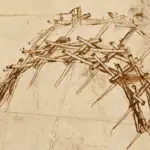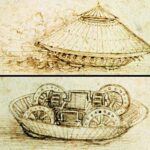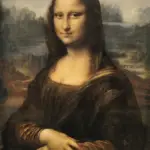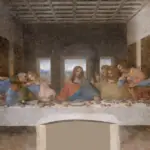by Dukgyu | May 7, 2025 | Renaissance

Galileo Galilei (1564-1642, 77 years old)
Galileo Galilei is best known for discovering the four largest moons of Jupiter, now called the Galilean moons—Io, Europa, Ganymede, and Callisto in 1610.
This article will explain the key discoveries and inventions that made Galileo famous, so you can understand why his name matters today.
Galileo’s telescopic observations changed how people view the universe. He revealed facts like mountains on the moon and Jupiter’s moons, supporting the idea that not everything orbits the Earth.
These findings stood out when most believed Earth was central to everything. Galileo’s courage to challenge this belief made history.
You will learn about his discoveries in space, work on motion, and inventions, like the improved telescope, which helped spark a new era in science.
Galileo used careful observation and experimentation. His methods changed the world and still influence science today.
What Is Galileo Galilei Best Known for in Astronomy and Telescopic Discoveries
Galileo Galilei changed astronomy with his telescopic observations and discoveries. He used experiments and evidence-based science to challenge traditional beliefs about the universe.
His work laid the foundation for modern observational astronomy.
How Galileo Revolutionized Astronomy With the Telescope
Galileo was the first to use a telescope for scientific night sky observations. He made his improved version of the telescope, allowing him to see things never viewed before.
Instead of trusting old beliefs, Galileo used his instrument to gather evidence and share what he found.
This was a significant innovation during the Renaissance. His detailed sketches and notes helped others in the scientific community understand what he observed.
Galileo’s techniques set new standards for the scientific method and became a model for evidence-based astronomy.
His work supported the idea that science should be based on observations rather than tradition.
Galileo’s use of the telescope led to discoveries that overturned the geocentric (Earth-centered) model of the universe. This started a revolution in science and physics, marking a break from medieval natural philosophy toward modern classical physics.
Discovering the Moons of Jupiter and Other Celestial Bodies
In January 1610, Galileo discovered four moons orbiting Jupiter. These are now called the Galilean moons: Io, Europa, Ganymede, and Callisto.
This was the first time anyone had found celestial bodies revolving around a planet other than Earth.
This discovery provided strong evidence against the ancient geocentric model. It showed that not everything in the heavens revolved around Earth, supporting the idea of heliocentrism, where the planets, including Earth, orbit the Sun.
Along with the moons of Jupiter, he spotted countless new stars in the Milky Way and observed Saturn’s mysterious shape.
His findings are featured in Britannica’s overview of Galileo’s contributions.
Observing Sunspots, Phases of Venus, and Mountains on the Moon
Galileo saw things in the sky that had never been described before. He observed dark spots moving across the Sun, called sunspots, proving the Sun was not perfect and unchanging.
This was shocking in his time.
He saw Venus go through phases like the Moon when he tracked Venus. This showed that Venus orbits the Sun, not Earth, giving more proof for heliocentrism.
Galileo also used his telescope to see mountains and craters on the Moon. He showed that it was rough, not smooth, as people once believed.
These discoveries further evidenced that the heavens were changeable and imperfect, which went against what the Church and many scholars taught.
Galileo’s observations and commitment to the scientific method helped establish him as the “father of modern science.”
What Is Galileo Galilei Best Known for in Physics and the Scientific Method
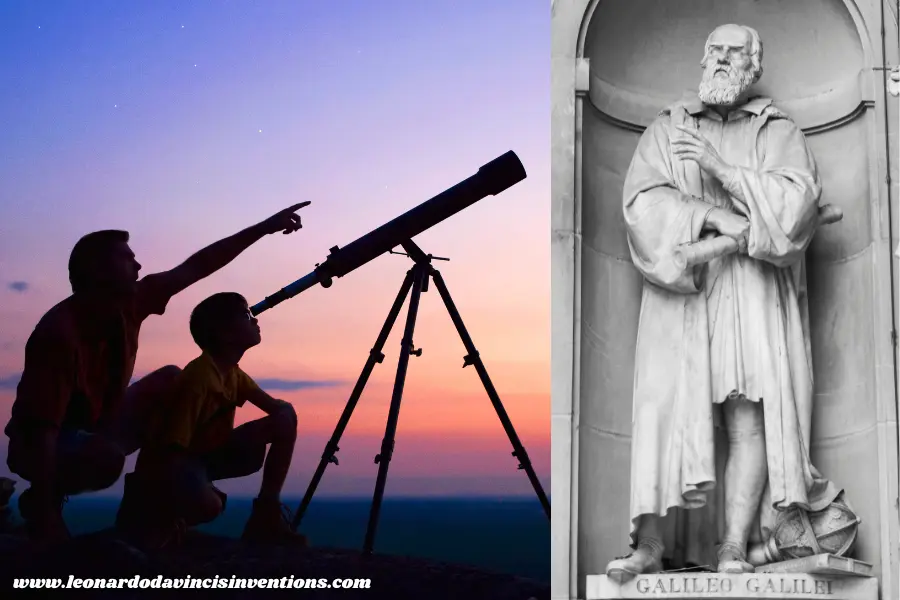
Galileo Galilei transformed natural philosophy into a precise science focused on observation and mathematical proof.
His studies on motion and gravity and experiments set the groundwork for modern physics and introduced the scientific method.
Uncovering the Laws of Nature and Motion of Falling Bodies
Galileo studied how objects move and fall. He did experiments by dropping objects of different weights from the same height.
He found that if there is no air resistance, all objects fall at the same speed, regardless of their weight.
Before Galileo, most people believed that heavier things fall faster. This belief came from Aristotle’s ideas.
Galileo proved this was not true through experiments. He proved that the laws of nature could be understood by watching how things behave rather than just trusting what people say.
He also used mathematics to describe how objects roll down inclines. His work changed how people describe and predict the natural world.
It helped lay the foundation for later discoveries about gravity and motion by figures such as Isaac Newton.
Challenging Traditional Beliefs With Evidence-Based Science
During Galileo’s time, people often listened to ideas from ancient books rather than experimenting for themselves. Galileo changed this by relying on observations, measurements, and testing ideas with experiments.
He believed that nature follows rules that can be described with mathematics.
He used the scientific method: asking questions, making predictions, testing those predictions, then sharing the results.
This was a big change from older ways of thinking.
This method of seeking evidence, rather than just accepting tradition, led Galileo into conflict with the Catholic Church. When his observations supported the idea that the Earth revolves around the Sun (heliocentrism), the Inquisition put him on trial.
Galileo’s Contributions to Modern-Era Classical Physics
Galileo’s work forms the roots of modern-era classical physics. He introduced ways to measure and describe natural events using straightforward mathematics and numbers.
He advanced the study of the strength of materials, showing how different shapes and sizes react to stress.
He also introduced ideas about inertia, which later became part of Newton’s first law of motion.
Galileo proved that the language of mathematics is the key to unlocking the laws of nature.
Today, people call Galileo the father of modern science because his experiments and ideas changed how people view physics and the scientific method.
His work made it possible to predict how things move or react using clear and testable scientific rules.
What Is Galileo Galilei Best Known for During the Renaissance and His Conflict With the Church
Galileo Galilei made major discoveries in astronomy using a telescope. His evidence supporting heliocentrism and his conflict with the Catholic Church helped spark the Scientific Revolution during the Renaissance.
Supporting Heliocentrism and the Earth Revolving Around the Sun
Galileo is best known for supporting the idea that the Earth revolves around the Sun, which is called heliocentrism. At the time, the traditional belief was geocentrism, which stated that everything in the universe revolved around Earth.
Galileo challenged this old idea by making discoveries with his telescope.
He was the first to report telescopic observations, including seeing the moons of Jupiter, the phases of Venus, and mountains on the Moon. These discoveries showed that not everything orbits Earth.
When he observed the moons of Jupiter, he saw objects moving around another planet, not Earth. This provided direct evidence against geocentrism.
The phases of Venus also proved that Venus orbits the Sun, not Earth. His observational astronomy changed natural philosophy and provided strong evidence for the mathematical language of nature.
The Inquisition, Trial by the Church, and Scientific Revolution
Galileo’s support for heliocentrism put him in conflict with the Catholic Church. The Church supported geocentrism and believed heliocentrism was against both Scripture and tradition.
His views were seen as dangerous and led to a trial by the Inquisition.
In 1633, the Inquisition called Galileo before them. He was ordered to recant his support for heliocentrism.
The trial ended with Galileo being found guilty of heresy and sentenced to house arrest for the rest of his life.
This marked a turning point in science because it showed the risks of challenging traditional beliefs.
This moment during the Renaissance reinforced the need for evidence-based science. Galileo’s use of the telescope for astronomy and his public demonstrations helped drive the Scientific Revolution and innovation.
Galileo as the Father of Modern Science and His Lasting Legacy
Galileo is often called the “Father of Modern Science.” He combined math, physics, and careful experiments, laying the foundation for modern classical physics.
He invented methods for testing hypotheses, focusing on measurable and repeatable experiments.
His discoveries, such as the motion of falling bodies and the laws of nature, helped explain gravity and inertia. He set new standards for the scientific method by insisting on careful observation and evidence.
This changed how people think about the natural world.
Galileo’s legacy as a pioneer in telescopic discoveries, evidence-based science, and challenging traditional beliefs remains strong.
His work continues to inspire those who value innovation and the pursuit of knowledge through observation and experimentation.
Final Thoughts
Galileo Galilei changed how people understood the universe with his discoveries.
He used a telescope to study the skies and found moons around Jupiter.
This challenged the idea that everything revolved around Earth.
Other major discoveries:
- Sunspots on the sun’s surface
- Phases of Venus
- Mountains and craters on the Moon
- Laws about how objects fall and move
Galileo studied gravity and motion by carefully measuring and experimenting.
He worked on inertia and supported the heliocentric model, which helped shape modern science.
He faced opposition from powerful groups who disagreed with his ideas.
Galileo continued to share his findings and set new standards for scientific research.

Galileo Galilei is best known for astronomy, physics, and the motion that changed how we see the world.
His work is still studied and respected in science classes today.
Science continues to move forward, building on Galileo’s methods of observation and testing.
Frequently Asked Questions
Galileo Galilei made key contributions to astronomy and physics, invented the telescope, and changed people’s views of the universe.
His findings challenged old beliefs and shaped modern science.
What is Galileo Galilei famous for?
Galileo Galilei discovered Jupiter’s four largest moons, now known as the Galilean moons.
He was the first to use a refracting telescope for significant astronomical discoveries.
He also studied gravity, motion, and improved the design of scientific instruments.
What is Galileo most remembered for?
He is most remembered for using the telescope to observe the heavens.
His observations showed that the moon was not smooth and that Jupiter had moons orbiting it.
Galileo’s work supported the idea that the Earth orbits the sun.
How did Galileo Galilei impact the world?
Galileo changed how people understood the universe.
His discoveries challenged traditional views about the cosmos and supported the sun-centered model.
He pioneered the experimental scientific method, which is important in science today.
What did Galileo do before he died?
Before he died, Galileo continued studying astronomy and physics, even while under house arrest.
He wrote important works, including “Dialogue Concerning the Two Chief World Systems” and “Discourses and Mathematical Demonstrations Relating to Two New Sciences.”
These writings shared his ideas with future generations.
When did Galileo go blind?
Galileo lost his sight later in life.
He became completely blind around 1642, just a few years before he died.
Who is the father of science?
Many consider Galileo Galilei to be the “father of modern science.”
This is because of his experiments, discoveries, and how he used observation to study nature.
What are 5 facts about Galileo?
- Galileo improved the telescope and used it to study planets and stars.
- He discovered Jupiter’s four biggest moons.
- He observed the rings of Saturn.
- Galileo studied gravity and invented scientific tools.
- He spent his later years under house arrest for his scientific views.
Was Galileo the first to see Saturn’s rings?
Galileo was the first person to observe Saturn through a telescope.
His telescope was too weak to see the full rings, so he described them as “handles” or “ears” on the planet.
Later, stronger telescopes revealed they were rings.
How did Galileo discover the Milky Way?
Galileo studied the Milky Way using his telescope.
He saw that the cloudy band across the sky was made of countless stars.
His telescope observations showed the universe was much larger and more detailed than once believed.
Where is Galileo buried?
Galileo is buried in Florence, Italy.
His tomb is in the Basilica of Santa Croce.
by Dukgyu | May 2, 2025 | Renaissance

Facts about the Medici family can initially seem confusing, especially with many vital names and stories from history.
You are not alone if you have ever wondered what made the Medici so influential. This article provides clear and direct details to easily learn about their impact and legacy.
The Medici family changed the course of history by shaping art, politics, and banking in Florence and beyond.
You will learn why this family holds such a special place in Europe’s story and why their legacy still matters today.
This collection of facts will help anyone understand who they were and what made them famous.
1. The Medici family originated from the Mugello Valley near Florence in the 13th century.

The Medici family began in the Mugello Valley, north of Florence, around the 1200s.
This region in Tuscany was mainly agricultural and rural when the family first appeared.
By the 13th century, the Medici moved closer to Florence and slowly gained influence.
Their roots in Tuscany helped form close connections with local nobility and merchants.
Over time, the Medici used their growing power to build a banking dynasty. This banking success helped them become important players in the politics and culture of Florence.
2. They began as wool merchants before expanding into banking and politics.
The Medici family started as successful wool merchants in Florence.
They used the wealth from this trade to gain influence and build connections.
They eventually founded the Medici Bank, one of Europe’s most powerful financial institutions.
Their role as a banking dynasty helped them enter politics and rise to become rulers of Florence.
This new power allowed the family to support art, science, and cultural advancement during the Renaissance.
3. Giovanni di Bicci de’ Medici founded the Medici Bank in 1397.
Giovanni di Bicci de’ Medici used his business skills to establish the Medici Bank in Florence in 1397.
The new banking dynasty quickly gained power and influence throughout Tuscany.
The Medici Bank became well known across Europe for its strong financial practices and profitable partnerships.
Their wealth allowed the family to support the arts, sponsor artists, and shape the culture of Florence during the Renaissance.
4. The Medici Bank became Europe’s most powerful financial institution in the 15th century.
The Medici Bank stood at the heart of Florence’s rise during the Renaissance.
Founded by Giovanni de’ Medici, the bank quickly expanded across Europe, opening branches in major cities.
Cosimo de’ Medici led the banking dynasty to new heights.
The Medici family used their economic power and influence to support politics, art, and science in Florence.
With their wealth, the Medici became powerful patrons of the arts, leaving a lasting legacy on European culture and architecture.
5. Cosimo de Medici, known as ‘The Elder,’ was the first family member to consolidate political power in Florence.
Cosimo de’ Medici, known as “The Elder,” made the Medici family the leading force in Florence during the Renaissance.
He used his banking dynasty to gain wealth and influence over politics.
Cosimo’s control lets the family shape culture through art patronage and the support of artists like Donatello.
He set the stage for the Medici to rule Florence as an unchallenged political dynasty.
6. The Medici ruled Florence for approximately 300 years.

The Medici family ruled Florence for about 300 years, shaping the city through politics, banking, and culture.
Their rule began in the early 15th century and extended into the 18th century, with only a few interruptions.
As a political dynasty, the Medici influenced not just Florence but all of Tuscany.
Their legacy includes the growth of the arts and the Renaissance, as they were important patrons to artists and thinkers.
7. Four popes were from the Medici family, including Leo X and Clement VII.
The Medici family produced four popes, leaving a strong mark on religious influence during the Renaissance.
Among these were Pope Leo X and Pope Clement VII. Both men played key roles in church politics and European events.
The political dynasty of the Medici gained more power and prestige through their Papal connections.
These connections helped the family expand their influence across Italy and beyond.
8. Lorenzo de’ Medici, known as ‘The Magnificent’, was a notable patron of Renaissance arts.
Lorenzo de’ Medici, often called “The Magnificent,” played a key role in the cultural advancement of Florence during the Renaissance.
He supported famous artists like Botticelli and Michelangelo, helping them create lasting masterpieces.
Lorenzo’s patronage of the arts helped turn Florence into a center for innovation and creativity.
His support extended beyond painting and sculpture, encouraging progress in science, architecture, and humanism.
Lorenzo’s influence left a strong legacy in art and culture that shaped Europe for centuries.
9. The Medici were key patrons for artists like Michelangelo, Leonardo da Vinci, and Botticelli.
The Medici family used their wealth and power in banking to promote art during the Renaissance.
They became famous as major supporters of artists such as Michelangelo, Leonardo da Vinci, and Botticelli, strengthening their influence on European culture in Florence and beyond.
This patronage, often called mecenatism, allowed the family to shape the city’s culture and architecture.
Lorenzo de’ Medici, known as “the Magnificent,” played a massive part in supporting these artists.
Their legacy in art remains visible in Florence today, including collections at the Uffizi Gallery.
10. They were known for blending political power with cultural patronage.
The Medici family used their banking dynasty to gain political and economic power in Florence.
They took control of the Florentine Republic and influenced much of Tuscany for centuries.
Medici patronage of the arts helped start the Renaissance.
They supported famous artists like Michelangelo and Botticelli, bringing culture and innovation to the city.
Their wealth supported major projects that left a lasting legacy in art and architecture, such as building the Uffizi Gallery and Palazzo Medici.
11. The family’s crest features six balls symbolizing wealth and influence.

The Medici family crest is famous for its six balls, or palle, displayed on a golden shield.
These balls represent the Medici’s wealth and power during the Renaissance era.
Many believe the balls relate to the Medici’s origins as bankers in Florence.
They symbolized their legacy as a Banking dynasty and their political and economic power in Tuscany.
This coat of arms can still be seen on buildings and monuments across Florence.
12. The Medici used marriage alliances strategically to expand influence across Europe.
The Medici family increased their power in Florence and beyond through marriage alliances.
These political marriages helped the dynasty connect strongly with European nobility and royal families.
Marrying into powerful families also gave the Medici more control over politics, wealth, and influence across the continent.
Their connections strengthened the Medici Banking dynasty and helped protect their interests.
Medici women like Catherine de’ Medici even became queens, bringing family influence into France’s highest levels of power.
13. The family produced two queens of France, Catherine de’ Medici and Marie de’ Medici.
Catherine de’ Medici was the daughter of Lorenzo II de’ Medici.
She married King Henry II of France and became queen consort, bringing the Medici family’s political dynasty into French royalty.
Later, Marie de’ Medici, another powerful family member, also became Queen of France through marriage.
Their marriages showed how the Medici used marriage alliances to spread their influence and wealth beyond Florence.
Both queens played major roles in French politics and culture.
14. Cosimo I de’ Medici became Grand Duke of Tuscany, further elevating the family’s status.
In 1569, Cosimo I de’ Medici became the first Grand Duke of Tuscany, raising the Medici family from Florentine rulers to Tuscan nobility.
Before this, Cosimo was known for his leadership in Florence and his role in expanding the Medici political dynasty.
By gaining this new title, Cosimo I secured greater political power and influence across Tuscany.
As many historical sources show, this move helped the Medici family become even more prominent in European Renaissance politics and culture.
15. The Medici were patrons of the famous Medici Chapel in Florence.
The Medici family used their wealth and influence to support one of Florence’s most important architectural landmarks, the Medici Chapel.
This chapel is a powerful symbol of the Medici dynasty and their lasting legacy in art and architecture.
The Medici Chapel is famous for its beautiful design and the artwork of Michelangelo, who contributed sculptures for the family tombs.
Their patronage helped shape the culture of Renaissance Florence and made the chapel a must-see destination for those interested in history and art.
16. They supported the Platonic Academy, reviving interest in classical philosophy.

The Medici family used their banking dynasty’s wealth to support the Platonic Academy in Florence.
Cosimo de’ Medici played a key role in bringing scholars together to study classic Greek philosophy, fueling the Humanism movement in Renaissance culture.
Their patronage of the Academy encouraged the translation and discussion of Plato’s works.
This effort helped advance art, science, and education throughout Tuscany, marking a turning point in Florence’s intellectual renaissance.
The Medici influence made Florence a center for learning and cultural advancement.
17. Medici popes were both patrons of the arts and involved in major religious controversies.
Medici popes played a key role in the Renaissance as both religious leaders and patrons of the arts.
These popes, such as Leo X and Clement VII, supported famous artists and architects, leaving a lasting mark on religious and cultural history.
Their rule also brought religious controversies.
The family’s political dynasty in Rome was connected to events like the Reformation, showing their profound influence on the Catholic Church and the intersection of power, culture, and politics in Europe.
18. The Medici Bank collapsed in the late 15th century due to bad loans and political conflicts.
The Medici Bank, once the foundation of the family’s economic power in Florence, began to decline during the late 1400s.
Bad loans, poor management, and shifting political alliances led to its downfall.
The bank’s collapse weakened the Medici family’s influence and threatened their status as a political dynasty.
Managers stole from the bank, and risky decisions exposed branches, especially the Bruges branch, which suffered heavy losses.
19. The Medici maintained power through politics and family ties despite business setbacks.
The Medici family faced several financial problems, including the decline of the Medici Bank, but they did not lose their influence in Florence.
They used politics and strong family connections to stay in control.
Marriage alliances and strategic partnerships helped the Medicis remain a powerful dynasty.
Their involvement in politics allowed them to continue ruling and shaping the culture and architecture of Florence even when business was not strong.
20. The family’s influence led to Florence becoming a center of Renaissance culture and innovation.
The Medici family’s influence turned Florence into a Renaissance art and culture center.
Their wealth from the Medici Bank supported many artists, scientists, and thinkers.
Cosimo de’ Medici and Lorenzo de’ Medici used their power and resources to patronize Renaissance artists.
The family’s generosity led artists like Michelangelo and Botticelli to create masterpieces.
Their political dynasty helped Florence become a center for innovation, education, and architecture.
This legacy still shapes the city’s culture today.
21. Medici alchemists and scholars contributed to science and humanism during the Renaissance.
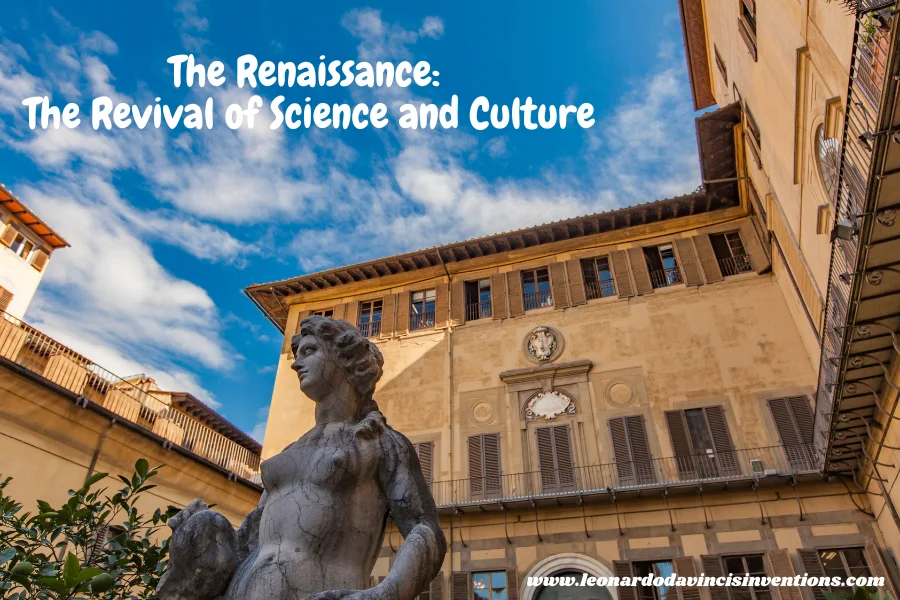
Medici alchemists and scholars helped spark cultural and scientific advancement in Florence during the Renaissance.
The family’s wealth and political power allowed them to support thinkers who changed people’s world views.
The Medici dynasty patronized famous scientists like Galileo Galilei.
Their support also encouraged artists and writers who connected art with new humanist ideas.
22. Many Florentine landmarks display the Medici coat of arms, reflecting their lasting legacy.
The Medici family crest appears on buildings throughout Florence.
This powerful banking dynasty ensured that its symbols were visible across the city as a sign of its influence and control.
Landmarks like the Palazzo Medici and many churches still show the Medici coat of arms.
Their architectural patronage left a clear mark on Florence’s culture and history, connecting modern visitors to the family’s lasting legacy.
23. The Medici family palace, Palazzo Medici Riccardi, is a masterpiece of Renaissance architecture.
Palazzo Medici Riccardi in Florence symbolizes the Medici family’s power and legacy during the Renaissance.
Cosimo de’ Medici, the head of the banking dynasty, commissioned the palace in 1444.
Michelozzo di Bartolomeo designed this building, which became an example for later Renaissance palaces.
Its elegant stone exterior and spacious courtyard reflect both wealth and innovation.
Inside, visitors admire the Cappella dei Magi, which is celebrated for its art and vibrant frescoes.
The palace remains an architectural landmark in Florence.
24. The family commissioned Michelangelo’s statue of David.
The Medici family’s patronage shaped the art and culture of Florence during the Renaissance.
Their influence touched many aspects of daily life, including architecture and sculpture.
As rulers of Florence, the Medici supported great artists.
Michelangelo’s statue of David reflects this legacy in art and politics.
The commission for David began when the Florentine Republic wanted a symbol of civic strength after the Medici were expelled from power.
25. The Medici’s investment in art helped launch the careers of several Renaissance masters.
The Medici family’s patronage of art transformed Florence during the Renaissance.
Their banking dynasty supplied the wealth to support famous artists like Michelangelo, Botticelli, and Leonardo da Vinci.
Cosimo de’ Medici and Lorenzo de’ Medici used their influence to give painters, sculptors, and architects opportunities.
The Medici legacy remains visible in important sites and collections such as the Uffizi Gallery and the Palazzo Medici.
Frequently Asked Questions
The Medici family significantly impacted the Renaissance, politics, religion, and banking in Italy.
Their legacy includes contributions to the arts, religion, and the development of modern finance.
What are some facts about the Medici family?
The Medici family started as wool merchants in the Mugello Valley in the 13th century.
They gained fame after Giovanni di Bicci de’ Medici opened the Medici Bank in 1397.
The bank became the most powerful in Europe during the 15th century and helped them rise to power in Florence.
Cosimo de’ Medici was the first in the family to lead the city.
Over time, the Medici family produced four popes, including Leo X and Clement VII, and married into many royal European families.
Their support for artists like Michelangelo and Leonardo da Vinci made Florence a center for the arts during the Renaissance.
What is true about the Medici family?
The Medicis became one of Europe’s wealthiest families by controlling Florence’s banking and politics.
They were key supporters of art and architecture, which helped lead to the Renaissance.
Their influence also extended to religion, with several family members becoming popes—proof of their reach and power.
Why were the Medicis hated?
Some people hated the Medici family because of their wealth, power, and control over politics.
Others viewed them as corrupt because they combined business and government for their benefit.
Their rivals often saw them as outsiders, even though they helped the city.
What is Medici best known for?
The Medicis are best known for their role as powerful bankers, arts patrons, and Florence rulers.
Their lasting support for artists started the Italian Renaissance and helped make Florence a cultural center.
The family’s influence in banking set the stage for modern finance.
Why was the Medici family so powerful?
The family’s banking skills gave them great wealth, which they used to gain influence in politics and the church.
They formed strong alliances through marriages and by building relationships with influential people.
Their control of Florence’s government let them shape the city’s future.
How much would the Medici be worth today?
It is difficult to give an exact number, but the Medici fortune was considered vast for its time.
Modern estimates place their wealth in the hundreds of millions or possibly over a billion dollars if adjusted for today’s money.
The Medici Bank was once the most powerful financial institution in Europe.
Who was the most powerful family in Italy?
During the Renaissance, the Medici family was the most powerful in Italy.
Their role in banking, politics, and religion gave them unmatched influence.
Other families, like the Sforza and Borgia, were important, but the Medicis’ long-lasting impact and ties to the church made them stand out.
Who was the most loved Medici?
Lorenzo de’ Medici, known as “Lorenzo the Magnificent,” was the family’s most loved member.
He supported artists and writers, improved the city, and was respected for his political and cultural work.
Many people in Florence admired him for his wisdom and vision.
Why was the Medici family corrupt?
Some members of the Medici family were accused of corruption, especially when they mixed banking and politics for personal gain.
They often used their wealth and power to influence city leaders, church officials, and even kings.
This control sometimes led to unfair practices and rivalries.
Where is Medici in Just Cause 3?
In the video game Cause 3, Medici is a fictional Mediterranean island. The game’s creators drew inspiration from Italy and other southern European countries.
The island does not relate to the real Medici family of Florence. The name serves as a nod to the famous Italian legacy.
by Dukgyu | May 2, 2025 | Renaissance

Medici family quotes have inspired people for centuries. Yet, finding their most powerful words in one place can be difficult.
If you are searching for meaningful sayings from this influential family, you may not know where to begin or which quotes are the most memorable.
This article compiles the best quotes from the Medici family, allowing readers to discover the wisdom and influence behind one of history’s most famous dynasties.
The Medici family shaped art, politics, and culture during the Renaissance. Their words reflect ambition, power, and a deep understanding of human nature.
This collection helps anyone explore the legacy of their thoughts and ideas.
45 Quotes by the Medici Family
Medici family quotes reveal their deep connection to power, money, and leadership in Renaissance Italy. They are remembered for ambition, vision, and their role as patrons of the arts in Florence.
1) “The truth is, not one of us is innocent.” – Medici

“The truth is, not one of us is innocent,” reminds us of the complexities within the Medici family and their dynasty. From Florence, Italy, their rise to power often meant making difficult choices.
Their ambition and vision shaped both politics and society during the Renaissance. Through banking, art patronage, and leadership, they influenced the culture and wealth of Europe.
2) “Love is a treacherous emotion.” – Medici
“Love is a treacherous emotion”, a belief the Medici family often held close. Their path to leadership in Florence demanded focus on power and ambition over personal feelings.
Protecting the family legacy meant they could not always trust matters of the heart. The Medici banking dynasty valued control and influence above everything else.
As guardians of culture and power, they understood that emotions could threaten their dynasty’s legacy.
3) “The whole tree does not die because one branch falls.” – Medici
“The whole tree does not die because one branch falls,” shows the Medici family’s understanding of resilience and leadership. Throughout history, the Medici dynasty from Florence, Italy, faced setbacks but kept their power and prestige.
This quote shows how they viewed hardship as part of maintaining authority. Their ambition and vision helped protect the family legacy even when faced with loss or betrayal.
As noted in Medici: Masters of Florence, historians still study their influence on art, politics, and culture.
4) “There are more ways for a woman to be indispensable than in just bearing children.” – Medici
This statement highlights the complex roles women played in the Medici dynasty. Women contributed far beyond family life; their influence extended into politics, patronage of the arts, and leadership in society.
Throughout Florence, Medici women strengthened the family’s power and prestige. They offered guidance and protection during times of change.
Their actions were vital to the enduring legacy of the Medici family in Renaissance Italy.
5) “Money to get power, power to protect the money.” – Medici Family Motto
“Money to get power, power to protect the money”—this simple phrase captures the Medici family’s ambition and strategy. They used wealth from their banking empire to gain influence and secure their position as leaders of Florence, Italy.
The Medici became known for political maneuvering and their ability to protect the family legacy. Their vision and ambition played a key role in their dynasty’s rise.
They helped shape the Renaissance through art patronage and cultural transformation.
6) “Endeavour to live with regularity, and gradually to bring your expenses within those bounds.” – Lorenzo de’ Medici

Lorenzo de’ Medici advised his family to control spending and lead a disciplined life. This approach helped the Medici banking dynasty maintain its wealth and control over Florence and beyond.
Managing expenses was key in the Medici family’s rise to power during the Renaissance. Careful spending protected the Medici family’s legacy and ensured their influence in Italian politics and society for generations.
7) “Political questions are settled in my house.” – Cosimo de’ Medici
Cosimo de’ Medici ruled Florence, Italy, with firm ambition and vision. He used his family’s banking dynasty and wealth to gain power and authority.
This quote shows how Cosimo managed Florence’s politics from behind the scenes. His influence shaped the city’s governance and helped the Medici family maintain control for generations.
Through strategic patronage and leadership, Cosimo left a legacy in Renaissance history.
8) “He it is who decides peace and war.” – Cosimo de’ Medici
This quote reflects Cosimo de’ Medici’s influence over Florence’s politics. Even without being the city’s official ruler, he made crucial decisions that shaped governance and society.
The Medici banking dynasty used wealth and control to guide peace and war. Their power reached beyond money, impacting the political and cultural direction of Renaissance Italy.
Cosimo’s leadership affected all aspects of Florentine life. His role in shaping Florence’s history is a key example of political power in Renaissance Italy.
9) “A man who has not been in Italy is always conscious of an inferiority.” – Medici
A man who has not been to Italy is always conscious of inferiority. This reflects the Medici family’s pride in their homeland and the cultural importance of Florence during the Renaissance.
The Medici dynasty shaped Italy’s artistic and economic influence. Their patronage and leadership helped Florence become a center of culture and power.
10) “True happiness consists not in the multitude of friends, but in their worth and choice.” – Lorenzo de’ Medici
Lorenzo de’ Medici valued the quality of relationships over their number. As a leader in Florence, Italy, his words reflected the Medici family’s approach to power and society.
He helped the Medici preserve their wealth and maintain authority during the Renaissance by choosing trustworthy allies.
Building a strong circle protected the family’s legacy and influence in a city known for artistic and economic power.
11) “He who is brave is free.” – Medici

He who is brave is free links courage with the ability to shape one’s destiny. The Medici family used their ambition and vision in Renaissance Florence to navigate political challenges.
Their bold actions helped them secure rule and guide both politics and culture. The family’s leadership set them apart among the Italian aristocracy.
This idea connects to their legacy as a banking dynasty and patrons of the arts who shaped the Renaissance through courage and determination.
12) “It is noble to be good, but it is divine to be just.” – Medici
This Medici quote highlights a core ideal in the history of Florence, Italy. It recognizes that personal goodness matters, but true greatness requires fairness and justice.
Justice played an essential role in the family’s legacy of governance and leadership. The Medici’s authority often relied on balancing ambition with a sense of duty to society.
Their vision went beyond wealth to focus on the greater good. They helped shape the culture and politics of the Renaissance era.
13) “No legacy is so rich as honesty.” – Medici
This quote speaks to the Medici family’s core values. In Florence, their reputation depended not just on their banking dynasty and wealth but also on trust and personal integrity.
Leadership during the Renaissance required more than money. It called for ambition and a public image rooted in honesty.
The Medici understood that an enduring legacy comes from principles as much as power. This quote, often linked to the Renaissance, reflects their approach to ruling and maintaining societal authority.
14) “The wise man does at once what the fool does finally.” – Medici
“The wise man does at once what the fool does finally,” reflects the Medici family’s approach to ambition and leadership. This idea matches their history of making quick and decisive choices, especially during their rule in Florence.
The Medici valued swift action to maintain their wealth and influence in Renaissance Italy. Their decisions protected the family legacy and grew their status in art, banking, and politics.
This mindset helped shape Florence’s cultural transformation.
15) “A wise man should always follow the paths beaten by great men.” – Medici
This quote captures the Medici family’s approach to ambition and leadership during the Renaissance in Florence. They relied on the wisdom and methods of successful figures before them to strengthen their family’s power and status.
Studying history taught the Medici how to build influence and protect their legacy. Their choices helped shape art, finance, and politics, creating a lasting mark on European culture.
16) “Life is a garden, and love is the flower.” – Medici

The Medici family helped shape the Renaissance in Florence, Italy. Their vision mixed wealth, culture, and power in one legacy.
This quote shows how much they valued love, even while pursuing ambition and influence. As a banking dynasty, the Medici protected their family’s legacy with care and strong leadership.
With their patronage, the Medici family supported art and helped Florence grow.
17) “Every noble work is at first impossible.” – Medici
“Every noble work is at first impossible,” reflects the ambition and vision often seen in the Medici family’s pursuit of greatness. They faced many challenges as they built their banking dynasty and gained influence in Florence.
Their legacy in shaping the Renaissance and supporting the arts did not happen overnight. It grew through persistence and the support of artists and thinkers.
The Medici protected and patronized innovators, and Florence became a center of culture and power under their leadership.
18) “To do good deeds is noble; to spare the wicked is base.” – Medici
This quote shows the Medici family’s view on justice and leadership in Florence, Italy. They believed in using their authority for good, not letting harmful actions go unpunished.
The Medici banking dynasty valued both nobility and clear rules. Their actions shaped the culture and politics of the Renaissance.
19) “Justice is the crowning glory of the virtues.” – Medici
“Justice is the crowning glory of the virtues”. This idea reflects how the Medici family viewed their role during the Renaissance as leaders of Florence.
The Medici banking dynasty saw justice as a foundation for their authority and governance. They believed that ambition and vision for society depended on fairness and the well-being of their people.
Leadership and justice helped preserve their dynasty and influence across Europe.
20) “Patience and perseverance have a magical effect.” – Medici
Patience and perseverance shaped the Medici family’s rise in Florence. Their ability to withstand setbacks helped them maintain authority and extend their influence during the Renaissance.
As a powerful banking dynasty, the Medici knew that steady effort led to societal leadership. Their ambition and vision became a foundation for cultural transformation in Italy.
21) “We must always be drunk on something — wine, poetry, or virtue.” – Medici
This quote connects to the Medici family’s deep ties to art, culture, and ambition. In Renaissance Florence, the Medici supported artists, poets, and thinkers, making them key patrons of the arts and shaping the city’s cultural landscape.
Their love for poetry and virtue reflects their desire for societal prestige and influence. The dynasty’s ongoing pursuit of art and virtue helped secure its lasting European legacy.
22) “Art is the highest form of hope.” – Medici
“Art is the highest form of hope.” The Medici family of Florence championed this idea as they became famous patrons of the arts during the Renaissance.
Their ambition and vision supported artists like Michelangelo and Botticelli. Through their patronage, the Medici fueled a cultural transformation in Italy.
Their wealth and control allowed them to shape history and raise the prestige of their family, leaving an enduring legacy in art and society.
23) “Power wears out those who do not use it.” – Medici
Power was crucial in the Medici family’s rise as Florence’s leading banking dynasty. The family believed that unused influence faded over time.
Their ambition led them to shape the political and cultural landscape of Renaissance Italy. They maintained their status by actively engaging in governance and patronage of the arts.
This quote reflects their understanding of leadership and the need to maintain societal authority.
24) “Generosity is the flower of justice.” – Medici
Generosity is the flower of justice, a phrase tied to the Medici family’s approach to power and governance. In Renaissance Florence, the Medici understood that acts of giving could strengthen their position and reputation.
Their history as patrons of the arts and protectors of culture demonstrated their belief that justice and generosity often go hand in hand.
Through their banking dynasty, the Medici showed that patronage and leadership shaped society and their enduring legacy.
25) “A small matter is the cause of many great misfortunes.” – Medici
This Medici quote highlights how even minor issues can lead to serious trouble, especially for a powerful family like theirs. In Renaissance Florence, one small mistake in politics or banking could damage a dynasty’s legacy.
The Medici paid careful attention to every detail when guiding the rule of Florence and their family’s financial empire. Their leadership taught future generations about the risks that come with wealth and authority.
26) “Culture is the ornament and glory of the natural man.” – Medici
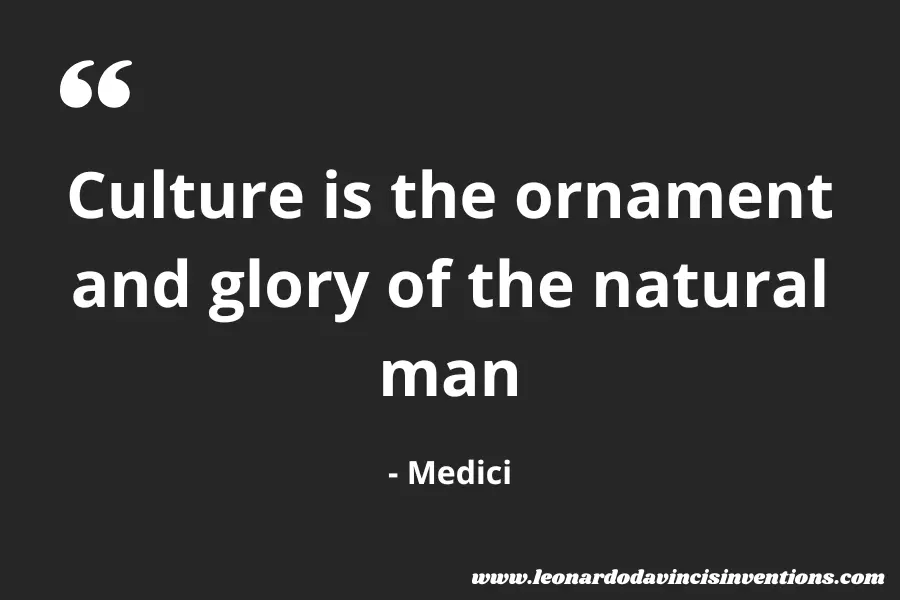
Culture plays a central role in the Medici family’s enduring legacy. Their influence reached across Florence, especially during the Renaissance.
The Medici dynasty’s dedication to art and learning helped shape modern society. Their patronage supported artists and thinkers, turning Florence into a center of creativity and innovation.
Through banking and politics, they gained power, but used it to support the arts and public life. Learn more about the Medici’s impact on Florentine culture and their legacy in history.
27) “Beautify the world around you with your actions.” – Medici
The Medici family believed in shaping Florence through positive actions. Their leadership set an example for others.
They showed that art and culture could raise a city’s prestige. Their patronage helped start the Renaissance, bringing new ideas and beauty to Italy.
The Medici banking dynasty used money and influence to protect their family legacy.
28) “Reason is the life of the soul.” – Medici
“Reason is the life of the soul” captures a guiding idea of the Medici family during their rule of Florence, Italy. The Medicis used logic and careful planning in their banking dynasty and political maneuvering.
Their influence helped shape the Renaissance, transforming both art and society. Medici leaders believed that power came not just from wealth, but also from clear thinking and vision.
They worked to maintain prestige and status by promoting reason in governance. The Medici supported artistic and economic innovation.
29) “A man cannot make a sure foundation by laying bricks hastily.” – Medici
This Medici quote reflects the family’s approach to building their dynasty in Florence, Italy. The Medici did not rush their rise to power.
They understood that careful planning and strong foundations were key to lasting influence. Although their banking dynasty took time to grow, it brought them both wealth and control.
30) “The best thing in the world is to do good to others.” – Medici
“The best thing in the world is to do good to others,” reflects the Medici family’s approach to leadership in Florence, Italy. They believed that using their wealth and power could positively shape society.
As major patrons of the arts and culture during the Renaissance, the Medici showed how influence can be used for good. Their legacy includes supporting artists and thinkers who changed history.
31) “The meanest of all men is one who deceives himself.” – Medici

The quote, “The meanest of all men deceives himself,” reflects the Medici family’s understanding of leadership and ambition in Renaissance Italy. Self-deception leads to poor decisions, especially in a city like Florence, where power and influence shaped society.
The Medici banking dynasty valued integrity to maintain their wealth and authority. Honesty with oneself allowed them to navigate politics and protect the family legacy.
Self-awareness stood as a key to lasting success in their rule.
32) “Wisdom is the daughter of experience.” – Medici
“Wisdom is the daughter of experience” highlights the Medici family’s practical approach to leadership during the Renaissance. This idea fits with their tradition of learning from real-world events instead of only relying on theory.
The Medici family, known for transforming Florence’s culture, used experience to shape their political decisions and expand their banking dynasty. Their influence in art and society made them respected as guardians of culture in Italy.
This quote is also associated with Leonardo da Vinci. It reflects the values of insight and practical knowledge seen throughout Renaissance history.
33) “To govern is to serve.” – Medici
“To govern is to serve” reflects the Medici family’s unique approach to leadership during the Renaissance in Florence. They understood that true authority depended on serving people’s needs, not just on holding power.
Their ability to balance ambition, governance, and service helped build trust in their rule. This idea played a crucial part in the Medici legacy and influence as rulers, bankers, and patrons of the arts.
Their focus on culture and the protection of Florence shaped the society and politics of Italy for generations.
34) “The greatest power is the power of kindness.” – Medici
The Medici family understood that true power did not always come from money or authority. Acts of kindness helped them earn trust and respect in Florence, Italy.
Their legacy shows how generosity can strengthen leadership in society. Many historians highlight how the Medici used kindness to support artists and thinkers during the Renaissance.
Through patronage, they shaped culture and raised the prestige of their family.
35) “Endeavor to grow continually in virtue.” – Medici
The Medici family believed in the importance of character and moral growth. As leaders in Florence, Italy, they knew strong virtues supported stability and governance.
Their ambition and vision helped them shape the values of their society. By striving to grow in virtue, the Medici protected their family legacy.
36) “The more knowledge, the greater the pain.” – Medici

The Medici family, famous for their leadership in Florence, understood that knowledge held value and risk. As they gained more insight into politics and finance, they saw the challenges that came with their ambitions.
With learning came tough decisions and responsibility. The rise of their banking dynasty depended on money, wisdom, and authority.
37) “Happiness consists in contentment.” – Medici
Happiness consists in contentment, which highlights a central value of the Medici family during the Renaissance in Florence, Italy. They understood that true wealth and control meant more than riches; it meant finding satisfaction in both achievement and daily life.
The Medici banking dynasty achieved power and influence by balancing ambition with a desire for stability. Their ability to shape culture and society came from knowing when to seek more and when to value what they had.
38) “Patience is the companion of wisdom.” – Medici
“Patience is the companion of wisdom,” reflects how the Medici family valued thoughtful decision-making. Their rise to power in Florence required both strategic planning and patience.
They used this approach to control politics, art, and banking. With steady ambition, the Medici helped shape the Italian Renaissance.
Their legacy as patrons of the arts shows how patience, combined with wealth and influence, shaped Italy’s history.
39) “A man’s worth depends on what he is, not on what he has.” – Medici
“A man’s worth depends on what he is, not on what he has”. The Medici family, known for patronizing the arts and leadership in Florence, Italy, believed that reputation and character mattered more than wealth.
They shaped the Renaissance through both influence and vision. Their actions show that societal leadership means more than money or status.
Members of the Medici dynasty valued ambition and innovation. This idea helped them leave a lasting legacy in politics and culture.
40) “The first step to wisdom is silence.” – Medici
“The first step to wisdom is silence” is a powerful phrase often linked to the Medici family. Silence gave them an edge in the world of politics and banking in Renaissance Florence, Italy.
The Medici strengthened their influence and protected the family legacy by listening more and talking less. Their approach clearly connected wisdom and authority.
Holding back and observing were keys to their leadership and prestige in a society full of ambition and competition.
41) “A friend is known in adversity.” – Medici

A friend is known in adversity captures the Medici family’s wisdom about loyalty. In Florence, where the Medici ruled, alliances shifted quickly due to political ambition and the pursuit of power.
During times of struggle, friends who remained loyal proved vital for the Medici’s survival and influence. Loyalty often determines who becomes a trusted advisor or a banking and governance partner.
This quote also reflects the Medici legacy as protectors of family and patrons of the arts.
42) “The soul that is within me no man can degrade.” – Medici
“The soul that is within me no man can degrade” highlights the resilience found in the Medici family’s leadership during the rise of the banking dynasty of Florence, Italy.
Even when political influence shifted, members of the Medici dynasty defended their status and authority in society.
Their ambition and vision shaped Florence’s artistic and economic influence. This quote reflects the Medici’s belief in inner strength, which helped them maintain power and become patrons of the arts during the Renaissance.
43) “Even the smallest good deed is never wasted.” – Medici
This quote reflects the Medici family’s values during the Renaissance in Florence, Italy. They believed even minor actions could shape history and culture.
Their patronage of the arts, such as supporting artists such as Michelangelo, shows how small investments grew into major changes. The Medici banking dynasty built its wealth and control through simple business choices.
44) “Harmony in the family leads to strength in the state.” – Medici
Harmony within the Medici family created a solid foundation for their rise to power in Florence, Italy.
Their unity helped them maintain authority and manage internal disputes.
The Medici shaped Renaissance society through art and banking.
The Medici understood that societal leadership started at home, influencing politics and culture for generations.
45) “To conquer oneself is the greatest victory.” – Medici
“To conquer oneself is the greatest victory,” shows the Medici family’s approach to leadership and ambition.
The Medici used self-discipline and control to guide their actions while building power in Renaissance Florence.
This mindset helped them maintain authority and influence.
The quote reflects the Medici’s view that true leadership begins with self-mastery, a principle they followed as guardians of culture and patrons of the arts.
Their rule in Florence and ability to shape the Renaissance left a lasting mark on European history.
Frequently Asked Questions
The Medici family is remembered for their power, wealth, and influence in Florence.
They played significant roles in art and politics, and inspired some of history’s most famous quotes.
What was Medici’s famous quote?
One well-known Medici quote is, “Money to get power, power to protect the money.”
Another that captures their philosophy is, “The truth is, not one of us is innocent.”
What was Catherine de Medici’s famous quote?
Catherine de Medici is linked to “There are more ways for a woman to be indispensable than in just bearing children.”
This reflects her strong, strategic role in European politics.
What was the dark side of the Medici family?
The Medici family often used their power to further their interests, sometimes through manipulation or violence.
Their rule saw conspiracies and political intrigue, with enemies within and outside Florence.
Their reputation includes both cultural achievements and ruthless tactics.
What is the Medici family famous for?
The Medici family is most famous for banking, ruling Florence, and supporting the arts.
They helped fund many Renaissance artists, including Leonardo da Vinci and Michelangelo.
Their legacy includes both political leadership and cultural patronage.
What was Machiavelli’s most famous quote?
Machiavelli, who worked for and wrote about the Medici, is famous for the line, “The ends justify the means.”
He is best known for his book “The Prince,” which discusses political power and leadership.
Why were the Medici so rich?
The Medici became one of the wealthiest families in Europe because of their banking empire.
They managed finances for the Catholic Church and many royal families.
Their financial success also gave them political power in Florence and beyond.
What was Teresa’s famous line?
There is no widely cited famous line by someone named Teresa directly connected to the Medici family.
Why was Medici called the Magnificent?
Lorenzo de’ Medici earned the title “the Magnificent” for his leadership in Florence and his support of the arts and humanism.
He was admired for his wisdom, diplomacy, and generosity.
Why did Machiavelli dedicate The Prince to the Medici family?
Machiavelli dedicated “The Prince” to Lorenzo de’ Medici to gain favor and possibly a political post.
He wanted to regain influence after losing his position when the Medici returned to power.
What was Maria Ressa’s famous quote?
Maria Ressa is a modern journalist. She is not related to the Medici family.
Her famous quote is, “Without facts, you can’t have truth; without truth, you can’t have trust.”

by Dukgyu | May 1, 2025 | Renaissance

The Medici family names are often linked with power, art, and political intrigue. It can be challenging to keep track of the key individuals in their extensive history.
You may wonder which relatives truly shaped the family’s legacy, and which names are important to remember. This overview will help you easily identify the most influential Medici, so you understand how each person left their mark.
Cosimo de’ Medici, Lorenzo de’ Medici, and Catherine de’ Medici were among the most significant figures bearing the Medici name, each playing a pivotal role in the rise of the family’s wealth and influence.
Other major members include Cosimo I, Francis I, and several popes such as Leo X and Clement VII.
Explore the connections between these names and the arts, politics, and religion through the Medici family tree and their remarkable history.
The Rise of the Medici Family in Florence and Tuscany
The Medici family transformed the history of Florence and Tuscany by establishing a powerful banking dynasty and exerting influence across politics, the arts, and the Church.
Their rise began with wealth and expanded through strategic marriages, political maneuvering, and support for artists and scientists.
Medici Family Names and Their Banking Dynasty Origins
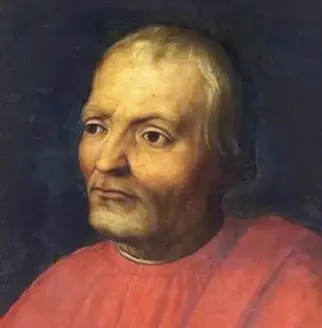
Giovanni di Bicci de’ Medici (1360-1429)
The Medici family first became wealthy through successful banking. Giovanni di Bicci de’ Medici set the foundation for the Medici Bank in the late 1300s.
This bank soon became one of the most powerful in Europe. It managed accounts for popes, kings, and major city-states.
Giovanni’s son, Cosimo de’ Medici, expanded the family’s banking operations while also strengthening ties with Florence’s elite. Cosimo managed money carefully and supported neighbors and politicians, which increased the Medici’s wealth and influence.
By offering loans and funding public works, the family won loyalty and respect among both citizens and rulers. Their banking power let the Medici family become the chief financiers of the Papacy and other Italian states.
Banking contracts, investments, and financial innovation helped turn them into a true banking dynasty.
The Medici Family Tree and Noble Family Connections
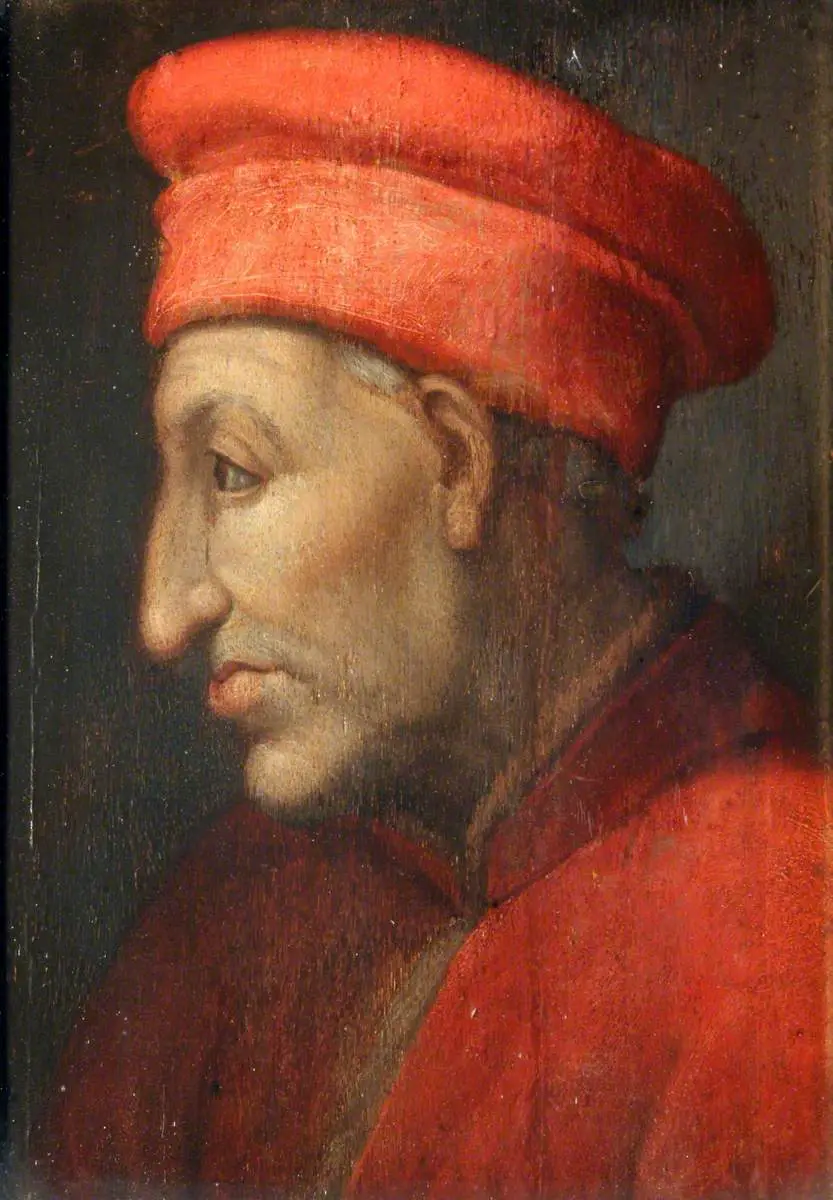
Cosimo de’ Medici (1389-1464)
The Medici family tree includes famous names such as Cosimo de’ Medici (Cosimo the Elder), Piero de’ Medici, Lorenzo de’ Medici (Lorenzo the Magnificent), and Catherine de’ Medici. Medici family members became popes, queens, and grand dukes, cementing their status among European royalty.
They strengthened family lineage through strategic marriages and alliances. For example, Catherine de’ Medici became Queen of France, and several members of the Medici family married into other ruling families.
The Medici coat of arms became a symbol of the noble family’s reach across Italy and Europe. These alliances made the Medici family a part of the broader network of European royalty and monarchs.
Their descendants included kings, grand dukes, and popes, which helped secure their legacy for centuries.
Florence, Tuscany, and the Republic of Florence’s Political Power
The rise of the Medici family in Florence led to their control of the Republic of Florence. Cosimo de’ Medici and his heirs mainly ruled behind the scenes, but their influence was decisive.
They utilized money and allies to outmaneuver their rivals and exert control over both politics and the economy. The Medici transformed Florence into a powerful city-state and the center of the Renaissance.
Their patronage of the arts attracted masters like Michelangelo and Leonardo da Vinci. Medici rulers later became Grand Dukes of Tuscany, expanding their power beyond Florence to encompass the broader region of Tuscany.
Their leadership left a lasting impact through monuments, libraries, and palaces, such as the Palazzo Medici. They shaped the culture and political history of both Florence and Tuscany.
Key Rulers and Influencers with Medici Family Names
The Medici family became one of the most powerful and influential noble families in Italian history. Through power consolidation, banking, art patronage, and strategic alliances, they shaped the Republic of Florence and impacted European royalty.
Cosimo de’ Medici and Giovanni di Bicci de’ Medici: Founders of Power
Giovanni di Bicci de’ Medici started the Medici family’s rise by founding the family’s influential banking dynasty in Florence. His careful management and investments made the Medici Bank one of the most important banks in Europe.
Giovanni’s leadership set the groundwork for the family’s increasing wealth and reputation. Cosimo de’ Medici, also called Cosimo the Elder, expanded on his father’s success.
He acted as the unofficial ruler of Florence, exercising tremendous political power behind the scenes. Using an extensive network, Cosimo de’ Medici supported artists and thinkers, helping to spark the Renaissance.
Lorenzo de’ Medici and Piero de’ Medici: Art Patronage and Renaissance Leadership
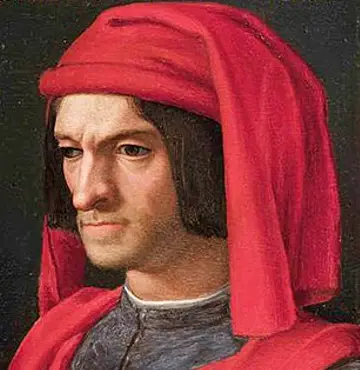
Lorenzo de’ Medici (1449-1492)
Lorenzo de’ Medici, known as “Lorenzo the Magnificent,” was a powerful ruler who led Florence during the Renaissance’s peak. He supported leading artists such as Michelangelo and Leonardo da Vinci, transforming Florence into a cultural hub of influence.
Under his guidance, the Medici Palace became known for hosting poets, philosophers, and scientists. Piero de’ Medici, his son, did not enjoy the same level of respect.
He lost control of Florence due to unpopular decisions and conflicts, which led to the end of the family’s rule for a period.
Catherine de’ Medici and the Medici Legacy in European Royalty
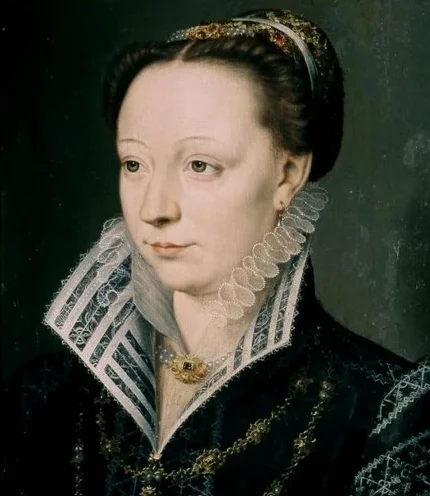
Catherine de’ Medici (1519-1589)
Catherine de’ Medici‘s marriage brought the Medici lineage into the royal families of France. As queen, she influenced French politics during times of religious conflict and court intrigue.
Her children became kings and queens, spreading the Medici heritage in European royalty. Catherine’s background in the Medici family allowed her to bring Italian culture and artistic achievements to the French court.
She strengthened the Medici legacy through strategic marriages and alliances, extending their reach far beyond Tuscany and Florence. The impact of the Medici family tree is evident in the royal houses that followed.
The Medici Family’s Cultural Impact and Enduring Legacy
The Medici family shaped Renaissance Florence, becoming powerful rulers, prominent bankers, and key supporters of the arts and sciences.
Through patronage, dynastic intrigue, and political power, the Medici family left an enduring mark on Italian history and world culture.
Medici Patronage of the Arts: Michelangelo, Leonardo da Vinci, and More
Medici art patronage fueled the Renaissance’s flowering in Florence. Cosimo de’ Medici and Lorenzo de’ Medici, both famous rulers, commissioned artists such as Michelangelo, Leonardo da Vinci, Botticelli, and Donatello.
Their support helped launch masterpieces and elevate Florence as a leading center of culture. Lorenzo de’ Medici, known as “the Magnificent,” personally fostered young Michelangelo, allowing him access to the Medici Palace and collection.
The Medici family’s legacy in art is visible in landmarks such as the Medici Chapel, featuring its grand Medici tombs, and the Medici Library. The Medici also sponsored scientific studies and the translation of ancient texts, thereby advancing Western knowledge.
Medici Popes, Dukes, and Grand Dukes of Tuscany: Monarchs and Papacy
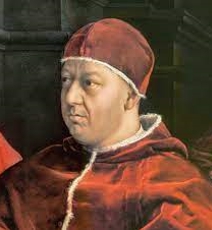
Pope Leo X (1475-1521)
Members of the Medici family tree became significant figures in European royalty and the Catholic Church. Four Medici popes—Leo X, Clement VII, Pius IV, and Leo XI—rose from this noble family, guiding the Church during crucial periods of religious change and dynastic struggle.

Pope Clement VII (1478-1534)
Medici popes used their wealth and influence to support art, architecture, and the Medici coat of arms in Rome. The Medici dynasty also produced dukes and Grand Dukes of Tuscany, ruling the region as monarchs for generations.
Their leadership transformed Florence and Tuscany, consolidating power while creating a lasting legacy of monuments, art, and scholarly achievements that extended across Italy and Europe.
Medici Influence on Culture, Medici Monuments, and Medici in Popular Culture
Medici’s influence on culture spans beyond art and politics. The family’s name adorns historic sites, such as the Palazzo Medici and the Medici Chapel.
Their funerary monuments stand as symbols of power and taste, while their archives preserve centuries of political and personal history. In recent years, Medici restoration projects have revived interest in the family’s heritage.
The Medici appear in popular culture, including TV shows, films, and literature, fueling fascination with their wealth, scandals, and dynastic intrigue. Alliances through marriage further intertwined the Medici genealogy with European royalty, deeply embedding their name in world history.
Frequently Asked Questions
The Medici family shaped Florence and European politics for centuries. Many people are curious about their current heirs, their wealth, hidden secrets, and the decline of their power.
Are there any Medici families today?
There are no direct male heirs from the historic Medici family. The original branch ended in the 1700s.
While some families in Florence have the Medici name, they are not related to the famous dynasty.
Who is the most famous Medici?
Lorenzo de’ Medici, known as Lorenzo the Magnificent, is often seen as the most famous. He led Florence during the Renaissance and supported artists like Michelangelo and Botticelli.
People also know him for his political skills and leadership.
Who inherited the Medici fortune?
After the death of Anna Maria Luisa, the last direct descendant of the Medici, the family’s fortune and art collection were left to the Tuscan state. She made an agreement that ensured the Medici art would remain in Florence for all time.
What was the Medici family called?
The family is commonly referred to as the House of Medici. Members included names like Giovanni di Bicci de’ Medici, Cosimo de’ Medici, and Lorenzo de’ Medici.
Their full name in Italian was “de’ Medici di Cafaggiolo,” more on key family names.
What was the dark side of the Medici family?
The Medicis employed bribery, marriage, and violence to acquire and maintain power. Political enemies sometimes faced exile or even death. Family members became involved in scandals and several murders.
Are there any living descendants of Mary, Queen of Scots?
Mary, Queen of Scots, was not part of the Medici family. Many European royals today can trace their bloodlines back to her.
How did the Medicis lose their money?
Later, the Medicis mismanaged the family’s banking business. Wars, political troubles, and overspending drained their fortune. By the 18th century, most of their wealth had been depleted.
Who was the last legitimate heir to the Medici dynasty?
Anna Maria Luisa de’ Medici was the last legitimate heir. She died in 1743, ending the main line of the family.
How much would the Medici be worth today?
It is hard to give a direct value. In today’s money, the Medicis could have been worth billions. Their banking, land holdings, and art collection made them among the wealthiest families in Europe.
Which Medici died of syphilis?
Alessandro de’ Medici, Duke of Florence, is rumored to have suffered from syphilis before his assassination in 1537.
However, historians remain uncertain about the medical details from that time.

by Dukgyu | May 1, 2025 | Renaissance

The Medici family emblem has fascinated people for centuries. Many wonder about its true meaning and the stories behind its design.
The emblem, which features five red balls and one blue ball on a gold shield, is most commonly believed to represent the family’s power, banking roots, and possible ties to medicine or trade.
If you have ever questioned what those mysterious balls stand for or the history hidden in their colors and shapes, you’re not alone.
Readers often seek clear answers about the Medici family symbol, but frequently find only confusing or conflicting stories. This article will help you get to the facts, including ideas about the balls as coins, medical pills, or signs of victory in battle.
You will uncover the real history and symbolism that can be found throughout Florence and Tuscany. The emblem appears in places like buildings and palaces where the Medici left their mark.
The Origins and Design of the Medici Family Emblem
The Medici family emblem is a powerful symbol of noble heritage and economic influence. Its design and symbolism are closely connected to the rise of Medici power in Renaissance Florence and their legacy in art, politics, and patronage.
Tracing the History and Meaning Behind the Coat of Arms
The Medici coat of arms first appeared in the 13th and 14th centuries as the family rose as a banking dynasty in Florence. The main element is a shield decorated with several round balls, called “palle.”
Historians believe the emblem changed over time as the family gained political power and recognition. Legends about the origin of the shield and balls vary.
One tale claims the marks are dents on a knight’s shield from a battle during Charlemagne’s rule. Another story suggests that the balls represent coins, highlighting the Medici’s roots in banking and finance.
While the true meaning remains debated, the coat of arms became a visual mark of Medici identity and status across Florence and Tuscany. The Medici emblem is visible on buildings, palaces, and artifacts funded by family members such as Cosimo de’ Medici and Lorenzo de’ Medici.
The Symbolism of Balls (Palle), Shield, and Ornaments
The balls or palle of the Medici coat of arms are its most famous feature. Typically, six red balls are arranged on a gold shield, with the top ball sometimes colored blue and marked with three golden fleurs-de-lis to honor the Medici ties to French royalty.
These balls may represent coins, reflecting the Medici bank’s wealth and influence in Renaissance Italy. Some interpret the balls as pills or blood drops, connecting them to the family’s roots in the medical profession, specifically doctors and apothecaries.
Ornamental flourishes and crowns often decorated the shield as their power grew. These additions signaled noble rank and connections to royalty, the papacy, and European courts.
Renaissance Iconography and the Influence of Heraldry
Medici heraldry drew upon elements shared by European nobility, but it became distinctly recognizable. The family’s emblem was displayed on public works, Medici palaces, and buildings throughout Florence.
Artists and architects incorporated the Medici family insignia into chapels, civic structures, and sculptures as symbols of patronage and civic pride. This widespread use made the Medici crest a badge of both private identity and public authority.
The coat of arms symbolized a blend of economic power, cultural influence, and proud heritage for the Medici dynasty.
The Medici Family Emblem’s Role in Power and Influence
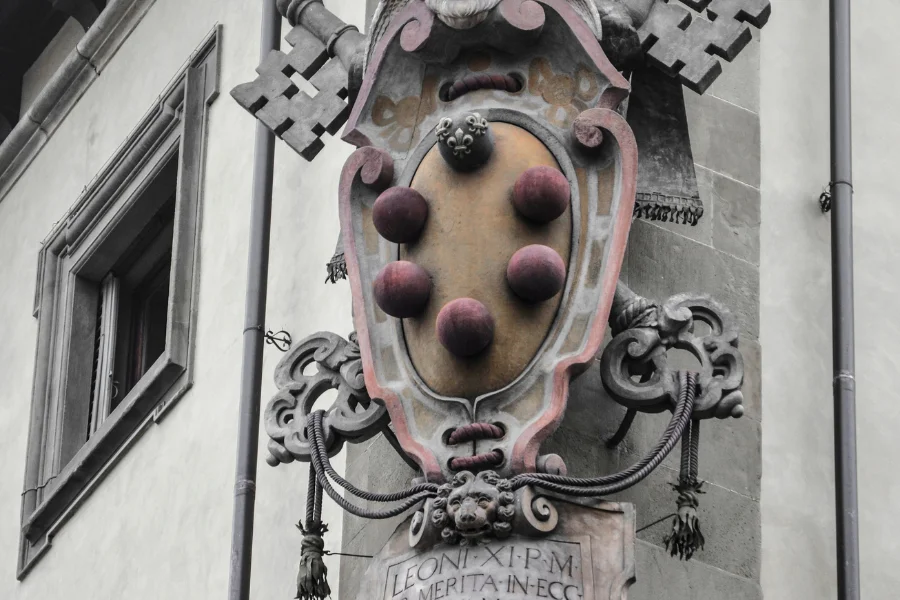
Coat of arms of the Medici family
The Medici family emblem, featuring the famous red balls, or “palle,” on a gold shield, signified their identity and ambitions in Renaissance Florence and Tuscany. This design appeared on palaces, coins, art, and public buildings, showing their political and economic reach.
Banking Dynasty and Wealth in Florence and Tuscany
The Medici family crest became a symbol of financial power in Florence. The Medici bank, recognized across Europe, used the emblem as its sign, marking its branches and documents.
Customers and rivals associated the red balls, or “palle,” with the stability and influence of this wealthy banking dynasty. Their rise was tied to banking innovations and their willingness to lend large sums to popes and European monarchs.
These connections increased both their wealth and status. The shield’s bold colors reflected their ambition and roots in Florentine heraldry, supporting their reputation for reliability and financial strength.
Political Power, Patronage, and Artistic Legacy
The Medici emblem appeared on civic projects, public artworks, and religious buildings, reflecting their impact on Florence’s political and cultural life. The patronage of artists such as Botticelli, Michelangelo, and Leonardo da Vinci helped define the Renaissance and spread the Medici insignia throughout Florence.
The Medici family used their coat of arms to legitimize political decisions, paving the way for family members like Cosimo de’ Medici and Lorenzo de’ Medici to lead the city. Their status as patrons earned them loyalty from citizens and artists, turning their family crest into a mark of authority and cultural prestige.
Medici Dukes, Popes, and the Family’s Royal Heritage
The Medici influence expanded beyond Florence as family members rose to become dukes, popes, and even royalty. The emblem spread to other Italian and European courts, symbolizing their fortunes and new noble status.
Medici popes such as Leo X and Clement VII brought the family’s symbol to the Vatican. The Medici coat of arms adorned papal documents and monuments, connecting it with religious and secular authority.
Their legacy, preserved in places such as the Medici Chapel and the Medici Palace, continues to define their role as cultural and political giants of Renaissance Italy.
The Lasting Legacy and Symbolism of the Medici Emblem
The Medici family emblem is one of the most recognized symbols of Renaissance Florence. It showcases a blend of heraldic power, artistic patronage, and dynastic pride.
Its significance is evident in art, legends, and modern culture, reflecting the enduring influence of the Medici family.
Medici Symbolism in Art, Architecture, and the Medici Palace
The Medici coat of arms, decorated with six red balls (palle) on a gold shield, is an emblem of the family’s banking legacy, nobility, and dominance in Florence. This design is evident throughout Florence on buildings they funded, such as the Medici Palace, the Medici Chapels, and churches associated with their patronage.
Artists from the Renaissance worked under Medici sponsorship, adding their crest to paintings, sculptures, and even furniture. These decorations helped link the Medici name to cultural achievement, wealth, and political power.
Their family insignia became a visual shorthand for their roots in banking and their ambition to control Tuscany and beyond.
Myths, Legends, and Interpretations Through History
Legends about the origin and meaning of the Medici emblem have spread for centuries. Some myths suggest the red balls represent blood, dents from a knight’s shield, or coins from the Medici banking empire.
Other tales associate the design with Charlemagne, portraying the Medici as warriors, while some interpret the balls as a symbol of the family’s connection to commerce and wealth. These stories built the Medici legacy and shaped their image as protectors and benefactors of Florence.
Each interpretation highlights aspects of their dynasty and history, from military valor to financial skill, making the emblem an adaptable symbol for Medici power.
Medici Emblem in Modern Culture and Its Enduring Significance
The Medici family crest remains a symbol of Tuscan heritage, still visible throughout Florence. Today, the emblem is found on street signs, public buildings, and souvenirs, testifying to the enduring influence of the Medici dynasty on art, architecture, and daily city life.
Its appearance in films, television series, and literature keeps the Medici legacy alive in popular culture. The family’s story of political power, wealth, and artistic influence continues to shape how people understand Renaissance Italy and its iconography worldwide.
Frequently Asked Questions
The Medici family emblem is most recognized for its series of balls, called “palle,” and often includes motifs like the fleur-de-lis. These symbols have roots in banking, politics, and powerful alliances that shaped Florence and Italy for centuries.
What does the Medici family symbol mean?
The Medici family emblem, featuring prominent balls, likely represents coins or banking, as the Medici were successful bankers in Florence. Some theories suggest the balls symbolize tools of their trade or marks from a shield, but most historians agree on the banking connection.
What is the Medici Fleur de Lis?
The Medici family also used the fleur-de-lis, a symbol reminiscent of Florence, in their crest. This connection shows how the family linked their identity to the city’s power and influence.
The fleur-de-lis on the Medici crest symbolized authority and a close relationship with Florence’s government and culture.
What are the Medici balls in Florence?
The six balls, or “palle,” on the Medici coat of arms still appear all over Florence today. These balls marked the Medici presence and influence in the city.
Many people have theories about their meaning, but most agree they refer to money and banking.
What animal is the Medici symbol?
The Medici family does not have a well-known animal symbol in their prominent crest. Giulio de Medici, who became Pope Clement VII, used an ostrich holding a horseshoe as his symbol.
This ostrich did not appear on the general family emblem.
What was the dark side of the Medici family?
The Medici family was involved in numerous political intrigues, assassinations, and power struggles. As they rose to power, they exiled or killed rivals, and people often accused them of corruption or manipulation.
What is the sigil of the Medici?
The Medici family’s primary emblem is a shield decorated with red balls on a gold background. The number and arrangement of the balls can change, but this icon is the most recognized symbol of the Medici.
What race was the Medici family?
The Medici were an Italian family from Florence. Their background matched that of wealthy Italians in Renaissance Tuscany.
No credible evidence suggests the Medici had non-Italian or foreign ancestry.
What was Catherine de Medicis’ symbol?
Catherine de’ Medici, queen of France, used a monogram with her initials. She sometimes paired it with the French royal fleur-de-lis.
Her symbols connected her Medici heritage with her French royal status.
What does the Florence symbol mean?
The symbol of Florence is the fleur-de-lis, a lily flower with three petals. It represents the city’s connection to purity and its religious foundation.
The Medici used this symbol to show their close ties to Florence’s identity.
What illness did Medici have?
Several members of the Medici family suffered from illnesses like gout. Some died of tuberculosis or poisoning.
Historians study their remains for clues about the health of this powerful family.





























 I’m Leonardo Bianchi, the mind behind Leonardo da Vinci's Inventions. Thanks for visiting.
I’m Leonardo Bianchi, the mind behind Leonardo da Vinci's Inventions. Thanks for visiting. 